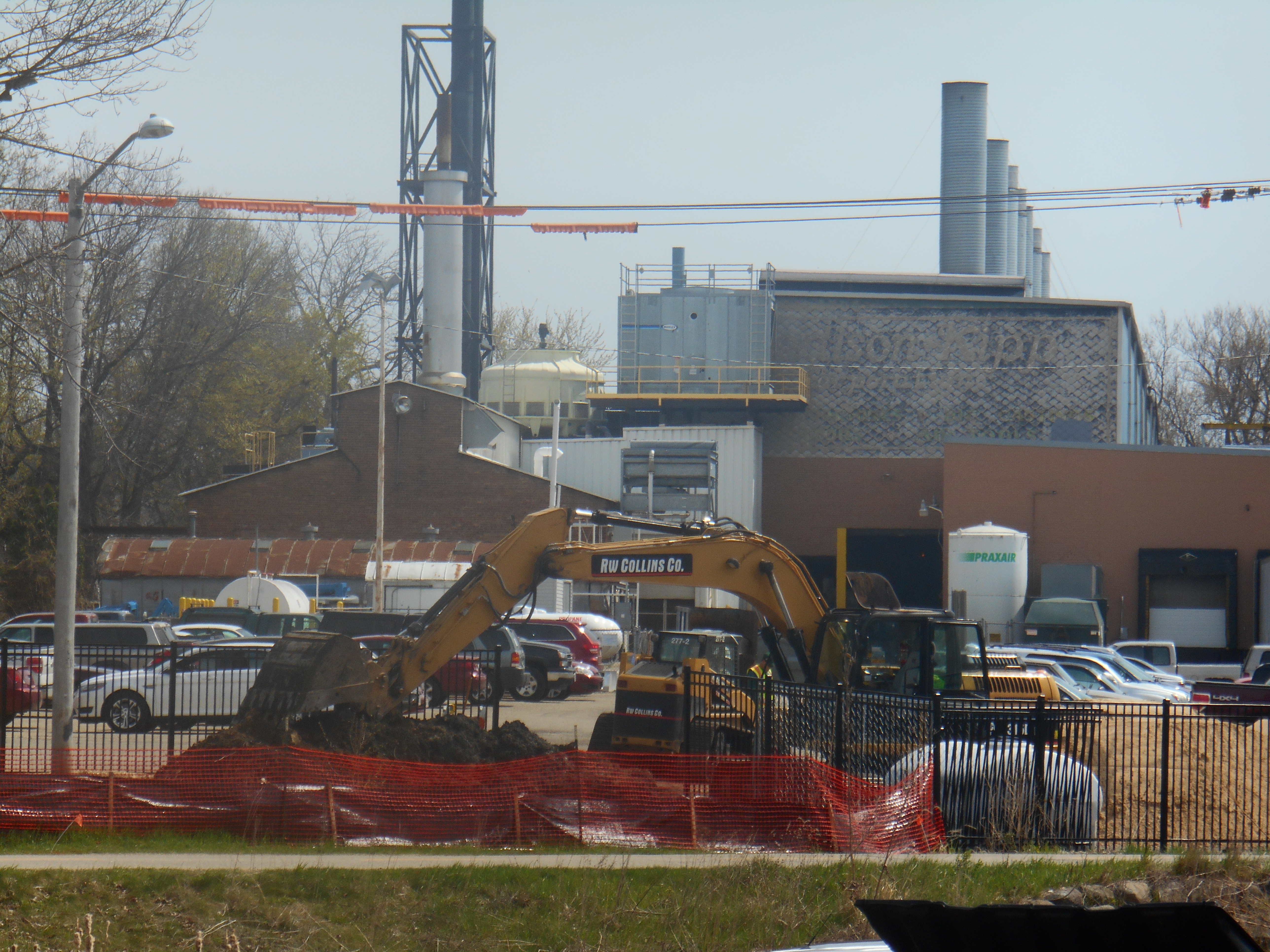Photo: Past excavations of PCBs along bike path next to Madison-Kipp Corporation
The Wisconsin Department of Justice (DOJ) finally settled the civil action against Madison-Kipp Corporation it initiated in September, 2012 regarding the decades of discharges of numerous toxic chemicals, including polychlorinated biphenyls (PCBs), tetrachloroethylene (PCE), trichloroethylene (TCE) and many others from the plant. The settlement includes a $350,000 fine—most of which is to cover DNR, DOJ, and court costs—along with “financial assurances” from Kipp of to cover future cleanup costs.[1] The settlement allows the company to delay cleaning up the high levels of PCBs under the factory, perhaps indefinitely. For more details about the settlement, read Steve Verburg’s Wisconsin State Journal article.
Tony Koblinski, Kipp’s CEO, told the State Journal he is “pleased with the settlement.”
Of course he is pleased. After all, Kipp officials asked the DOJ to sue it back in 2011-2012. As we wrote in a previous post, the lawsuit was intended all along to allow Kipp to legally negotiate its way out of fully investigating and cleaning up the egregious toxic pollution it spewed far and wide into groundwater, surrounding neighborhoods, Starkweather Creek, and Lake Monona.
The fine DOJ issued against Kipp is paltry—a drop in the bucket for the company. Another big bonus? The settlement also protects the company from future lawsuits! [2]
So, Kipp got what it wanted–with the help of its high-powered law firm, Michael Best & Friedrich, which negotiated with DOJ attorneys for five years while citizens were in the dark.
As for the environmental investigations and remediation requirements outlined in the settlement, most are weak and/or include loopholes that would allow Kipp to avoid fully cleaning up the contamination. The groundwater PCB testing outlined in the settlement is particularly problematic; it is technically inadequate on a number of levels and designed not to find that PCBs have traveled offsite in groundwater. This is extremely critical, because if tests show PCBs have moved offsite in groundwater, this could trigger excavation of PCBs under the factory.
Another significant problem is that many of the environmental investigative and remedial requirements in the settlement depend on DNR’s discretion and oversight, which to date have been lax and inadequate (DNR’s lax oversight of Kipp in the past allowed the horrible contamination situation at Kipp to develop in the first place!). Unfortunately, in the current de-regulatory environment in Wisconsin, DNR’s oversight of Kipp is not likely to improve, and will likely get worse.
Meanwhile, people and the environment around Kipp will continue to be exposed to hazardous chemicals from the factory, including highly toxic PCBs, indefinitely.
[1] The “financial assurance” is to be up to $1.65 million and according to the WSJ article, could be in the form of a bond, insurance policy, or letter of credit. We expect it will be covered by Kipp’s insurance.
[2] The settlement states: “Compliance by Madison-Kipp with its obligations under this Stipulation and the Order for Judgment shall constitute full compromise, settlement, satisfaction, and release of Madison-Kipp, its owners, members, employees, predecessors, successors, parents, subsidiaries, affiliated companies, officers, directors, agents and assigns for any and all civil and/or criminal liability for any and all violations described in, arising out of, or relating to the facts alleged in the Complaint, as well as any claims that could have been alleged against Madison-Kipp based on any violation concerning the release or discharge of hazardous substances at the Facility which were reported to or otherwise were identified for or by DNR prior to the date of this Stipulation.”

